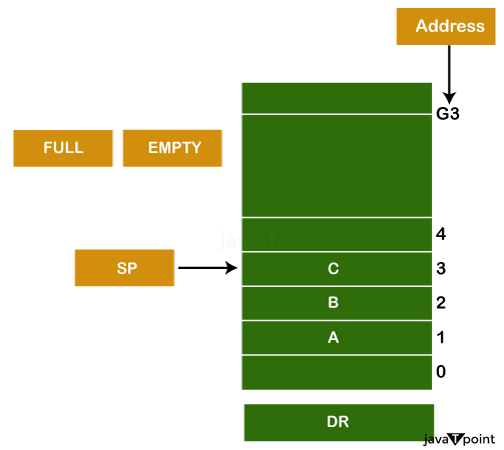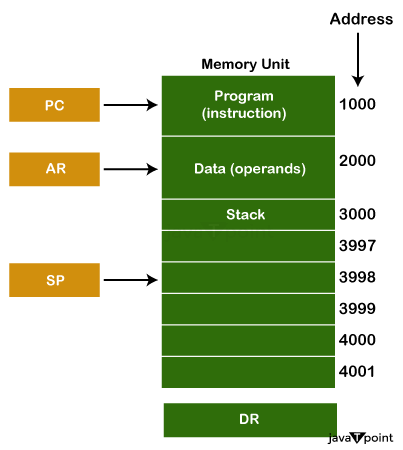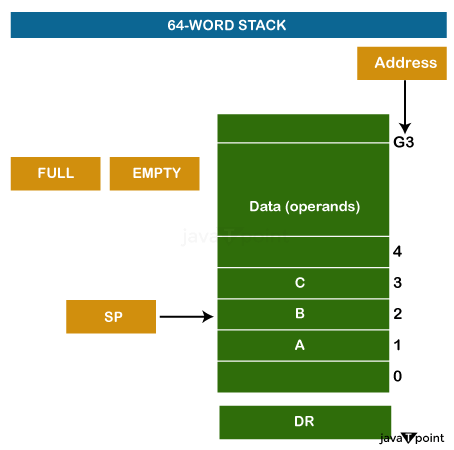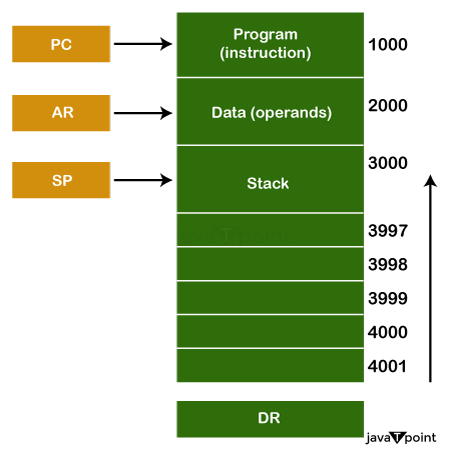Stack OrganisationUnderstanding StackA stack stores data using the LIFO principle. The last item added is the first one to be removed, like a pile of plates. Stack ImplementationA stack is a memory structure in a computer that updates its pointer (SP) when elements are added or removed. The stack can grow upwards or downwards in memory. In an upward-growing stack, the stack pointer is incremented when an element is pushed and decremented when it's popped. In a downward-growing stack, the stack pointer is decremented when an element is pushed and incremented when it's popped. 
Implementing a stack can be achieved using various programming constructs and data structures. 1. Array-based Stack implementation:A stack data structure is a collection that conveniently stores a group of elements, allowing for easy addition and removal from the end of the array. Despite its user-friendly design, the size of the stack is predetermined, resulting in a limited capacity for element additions. Adding new elements to the stack might result in stack overflow consequent to program crashes and unexpected behaviour. Advantages:
Disadvantages:
2. Linked List-based Stack implementation:A stack is a vital data structure in computer science that efficiently manages memory and resizes data. It uses a linked list to represent each element as a node and stores elements in a specific order. When a new element is added, it becomes the top of the stack. Similarly, when an element needs to be removed, the top node is taken off. The stack is an essential tool for programmers looking to optimize their code. Advantages:
Disadvantages:
Stack Operations:
In computer science, a stack is an abstract data type that serves as a collection of elements with two principal operations:
The stack follows the Last-In-First-Out (LIFO) concept, meaning the element inserted last comes out first. It only has one pointer, the top pointer, which points to the stack's topmost member. Some additional operations can be performed on a stack:
Stack Organisation classificationThere are two main types of stack organisation in computer architecture: register stack and memory stack. Register StackA register stack is a stack of memory words or registers placed on top of each other. A binary number, the address of the element at the top of the pile, is stored in the stack pointer register. The top element is removed from the stack by reading the memory word at the address held by the stack pointer and decreasing the stack pointer by one. A new comment can be added by increasing the stack pointer and inserting a word in the newly expanded location. 
Memory StackCreate a memory stack in attached RAM by assigning a portion of memory and keeping its pointer in a processor register for a stack operation. The starting memory location of the stack is specified by the processor register as the stack pointer. The stack pointer first points at a specific address, and then the stack grows with decreasing addresses. The data inserted into the stack is obtained from the Data Register, which reads the data retrieved from the stack. 
The advantages of stack organisation are:
The disadvantages of stack organisation are:
Next TopicTime Complexity of using heap
|
 For Videos Join Our Youtube Channel: Join Now
For Videos Join Our Youtube Channel: Join Now
Feedback
- Send your Feedback to [email protected]
Help Others, Please Share










